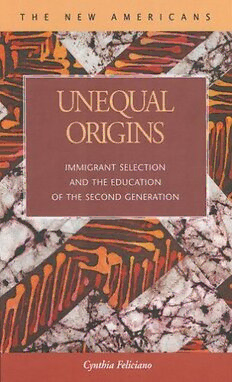
Unequal Origins: Immigrant Selection and the Education of the Second Generation (The New Americans: Recent Immigration and American Society) PDF
190 Pages·2005·0.85 MB·English
Most books are stored in the elastic cloud where traffic is expensive. For this reason, we have a limit on daily download.
Preview Unequal Origins: Immigrant Selection and the Education of the Second Generation (The New Americans: Recent Immigration and American Society)
Description:
Feliciano examines how immigrants compare to those left behind in their origin countries, and how that selection affects the educational adaptation of children of immigrants in the United States. Her findings contradict the assumption that immigrants are negatively selected: nearly all immigrants are more educated than the populations in their home countries, but Asian immigrants are the most highly selected. This helps explain the Asian second generations’ superior educational attainment as compared to Europeans, Afro-Caribbeans, or Latin Americans. The book challenges cultural explanations for ethnic differences by highlighting how inequalities in the relative pre-migration educational attainments of immigrants are reproduced among their children in the U.S.
See more
The list of books you might like
Most books are stored in the elastic cloud where traffic is expensive. For this reason, we have a limit on daily download.
